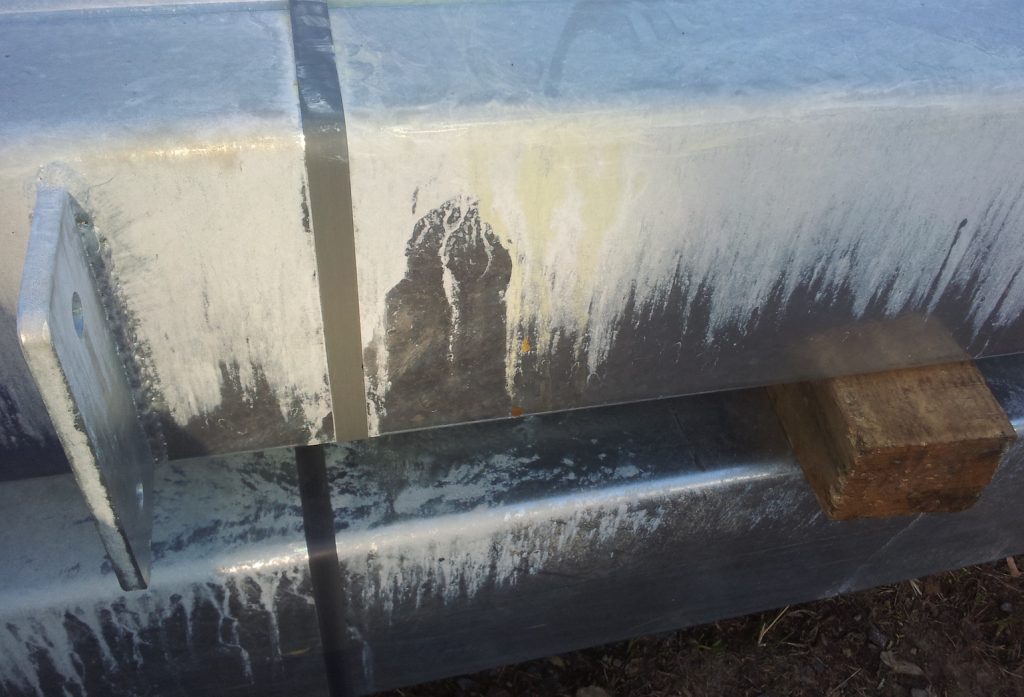While wet storage stain or “white rust” rarely impairs the protective ability of a galvanized coating, it’s an aesthetic blight that’s fairly easy to avoid.
Following record rainfalls this year, the Galvanizers Association of Australia (GAA) highlights the increased potential for wet storage stain to form on newly galvanized products in the lead-up to spring. “Wet storage staining is more prevalent after heavy rainfall, or between changes of season and weather where more humid periods occur. Although it rarely impacts the protective abilities of the coating, it can be unsightly and requires additional processing time to address,” says Ann Sheehan, Corrosion and Sustainability Officer, GAA. Wet storage stain occurs when freshly galvanized materials are exposed to moisture such as rain, dew or condensation (high humidity), and remain in a location with limited airflow over the surface area. These conditions can impact how the protective patina is formed. Usually, the zinc reacts first with oxygen to form zinc oxide, and then with moisture to form zinc hydroxide. With good airflow, the zinc hydroxide then converts to zinc carbonate to provide barrier protection to the zinc, thus slowing its corrosion rate. However, if the zinc doesn’t have access to free-flowing air and remains exposed to moisture, the zinc hydroxide continues to develop instead and forms wet storage stain. White rust can develop over weeks or even overnight if the conditions are just right. In severe coastal environments, wet storage stain can also occur from built-up airborne salt deposits that absorb moisture during the night. Some galvanized steel can develop a type of wet storage stain known as ‘black spotting’, which appears as darker spots with or without white powdery rust around it. This type of wet storage stain is more common on light gauge steel such as sheets, purlins and thin-walled hollow sections. It is much harder to clean than typical forms of white rust, and sometimes the spotting may still be visible after cleaning.How to prevent the development of wet storage stain or white rust
To avoid the likelihood of wet storage stain developing, the GAA recommends:- Don’t stack newly galvanized articles on top of each other, and don’t store them too close together
- Store inside if possible, off the ground and at an incline
- Ensure there is plenty of free-flowing air in the storage area
- Remove plastic wrap or temporary packaging from galvanized products once they have been transported, as packaging can hold or retain moisture on the inside.

